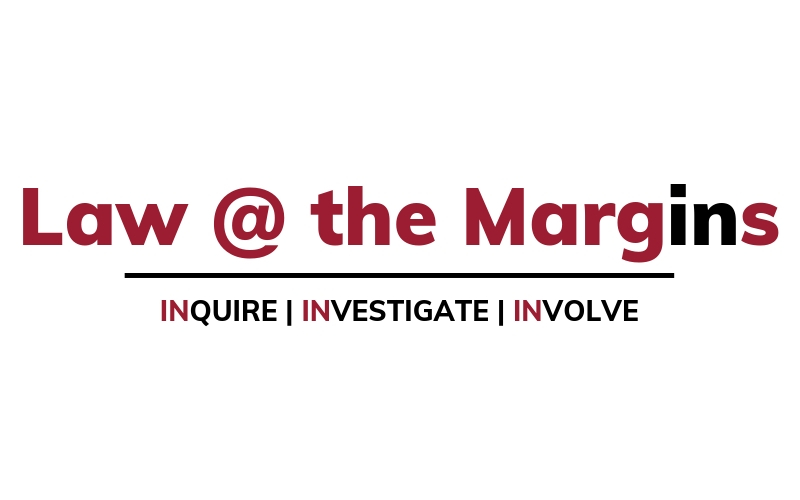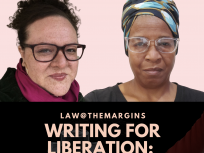
In the 1960s, the term movement lawyer emerged to identify the lawyer that provided legal support to the social movements of the time from civil rights to women rights. Movement lawyers fell along a wide ideological spectrum from Thurgood Marshall as the lawyer for NAACP to William Kunstler. There were less publicly known lawyers such as Leo Branton Jr. who represented Angela Davis. Since then, lawyers who see their work as providing support to social movements have not always used the term to identify themselves. Instead, descriptions like public interest or social justice lawyer are more often heard. This is in large part due to the changing political context of the 1980’s and 1990s, which saw a more conservative political climate combined with a professionalization of the field. In Retrenchment and Resurgence? Mapping the Changing Context of Movement Lawyering in the United States, Michael McCann and Jeffrey Dudas discuss this political shift as going from a “favorable context for rights-based, legally oriented social movement activity” to an “increasingly unsupportive, hostile context by century’s end.” This changed political landscape may inform the new identifications of lawyers. In 2013, as I use movement lawyering to identify my work, it almost feels anachronistic. However, I think now more than ever it is important for to revive it for next generation of lawyers.
Post 60’s, lawyers committed to using law for social change began working around certain issues or causes. Lawyers became siloes in their specific causes – employment, housing, or human rights to name a few. Organizations presented themselves as non-profit organizations or public interest law firms. In my own legal career, I found myself defined as a public interest lawyer to social justice lawyer which are not negative designations and are useful identifications but do not fully capture the necessity of lawyers to work in support of grassroots, broad based movements for social change. Although social movements in the late 90s to early 2000s were diffuse, I understood my work to be informed and in support of a larger movement for socio-economic change both in the United States and globally. The way I entered the work was through my interest in labor rights, but my practice has required me to pick other areas of specialties as needed by the clients, communities, or community based organizations I represented.
It is rare these days for young lawyers to identify themselves as movement lawyers. That is because it is hard to identify what movements they are aligning with. Instead, new graduates committed to public interest focus their attention on securing good public interest jobs. The increased professionalization of public interest and social justice lawyering as a career has some benefits in that it increases the training and opportunities for those interested in this work, but it has a negative impact in that new graduates do not see their work as being part of a broader vision for social change. As a result, I observed many young lawyers feel disillusioned, or “burnt out”
With the founding of Center for Constitutional Rights’ Social Justice Institute, and in their recent second annual conference Movement Lawyering in the 21st Century, there is a possibility to revive, reframe movement lawyering within the current socio-political context. There is a strong need for this type of training to bring together new and experienced lawyers across issue areas to see where there are common areas for support and to share lessons learned. There are also some positive lessons from movement lawyers of an earlier generation that us newer lawyers can learn such as the limitation of a litigation-based strategy. There are ways in which a new generation of movement lawyers can imagine a broader vision for social change. I do think that young lawyers today who are committed to movement lawyering face unique challenges to their work, because they are required to engage their advocacy on multi-levels litigation, policy, education and media, all in conjunction with grassroots organizations with differing ideological views. They are often called upon to draw from a wide range of skills, often not taught in law schools.
Within this context, as a law professor, I think what skills or knowledge is necessary for us in law schools to provide to students. Some traditional skills that law schools teach are helpful such as client centered lawyering. Others such as collaboration, mediation or negotiating different client interests and views are not.
There are ways law schools could do more but I don’t expect that to happen on an institutional level because it is not in the business of law schools to train movement lawyers, except for a handful of law schools whose explicit mission is to gear students towards using their legal education for social change. Still, I think there is alot that can be done at the micro faculty-student level that can be enormously helpful. Students at places where their law school do not see public interest as their explicit mission should organize with other law students and consider ‘teach-ins” and other self-education initiatives to prepare them for social justice work. I am confident that lawyers and educators would welcome and support such student led education initiatives. Even where they may not be any possibilities for institution wide changes, supportive faculty and students can implement simple curricular changes. Here, it is important to note that students can play a pivotal role in demanding classes and training to allow them to be effective public interest or movement lawyers. Afterall, they are paying a hefty price for their education? While not an exhaustive list, below are some areas that legal educators who are committed to developing movement lawyers should incorporate into their curriculum.
Uncertainty of Law – Given that we devote so much time and money to the study of law, it is natural for lawyers to want to hold up law as some fixed, tangible good and continue to reify it to make our delivery of legal services valuable. Our legal system does that by giving judge made decisions precedential effect to create a body of common or positive law that occupies its own fixed space, which we refer to the rule of law. From this body of law, rights are assigned, delineated. But, when we learn that there is an uncertainty to this law, and it is not as homogenous, or neatly packaged as first year doctrinal course or bar exam prep classes would like students to believe, we may feel we lose that tangible good, and therefore, we may not be much of service. However, it is important to teach law to reveal its uncertainties and unpredictability. Making explicit the internal tensions, contradictions within the doctrine are helpful to demystify the law, and to allow students to see openings for advocacy. Simply by asking for example what are the policy imperatives for certain rulings to enforce private contracts – who benefits, what interests are served – and by engaging students in a discussion on this will get them to a robust conversation on law and economics.
Critical Conscientious Subjects – Much of the literature on public interest lawyering asks the lawyer to subsume herself to the movement. Understandably, a lawyers’ privileged position in society, and being the conduit to the legal system for communities often excluded requires lawyers be conscious of their position in the system. Yet, they know the legal system, and should use that knowledge towards movement building efforts in ways that their clients seek. Also, much of the literature assumes that the lawyer lives outside or does not align herself with the community being served. For working class identified or students of color, it does not make sense to create this division between lawyer and community, because they are from the communities that they serve, and need different ways to renegotiate their standing in the community as a lawyer. By teaching students to be critical and conscientious subjects is far more helpful than prescribing some generic relationship to social movements.
Social Movement History and Legal Theory – All students should take a class or conduct their own teach-in on social movement history and/or legal history. To this day, my class on Critical Legal Theory helps me to understand my work. Having this historical and theoretical knowledge allows the student to better understand how laws have operated historically, and what ideologies were employed to maintain certain narratives that denied rights to people and communities. Students will be better equipped to understand their role within movements if they understand the framework within which they are operating.
Power of Story telling and Skill of Engaged Listening – In the first year of law school, students struggle to learn a large amount of doctrine so they can know the law. They read facts only to dutifully convert them like raw materials to legal theories. In this process, they often ignore the details of the client’s story. Key feature of injustice is to render our client voiceless without an opportunity to say – I was wronged. By engaged listening, law students can very simply remedy this. We underestimate the power of listening and its healing and transformative potential. Also client stories are powerful ways to highlight injustices in our system.
There are many more classes and skills that legal educators can focus on, and the challenge for movement lawyers is that the work we do is so diffuse and specialized that is hard to predict the precise set of skills needed. But, at least students equipped with critical thinking and engaged listening skills and a strong footing in movement and legal theory is a good start.





[…] https://staging.lawatthemargins.com/intergeneration-movement-lawyer-2-0/ […]
There’s definately a lot to know about this
issue. I really like all of the points you’ve made.